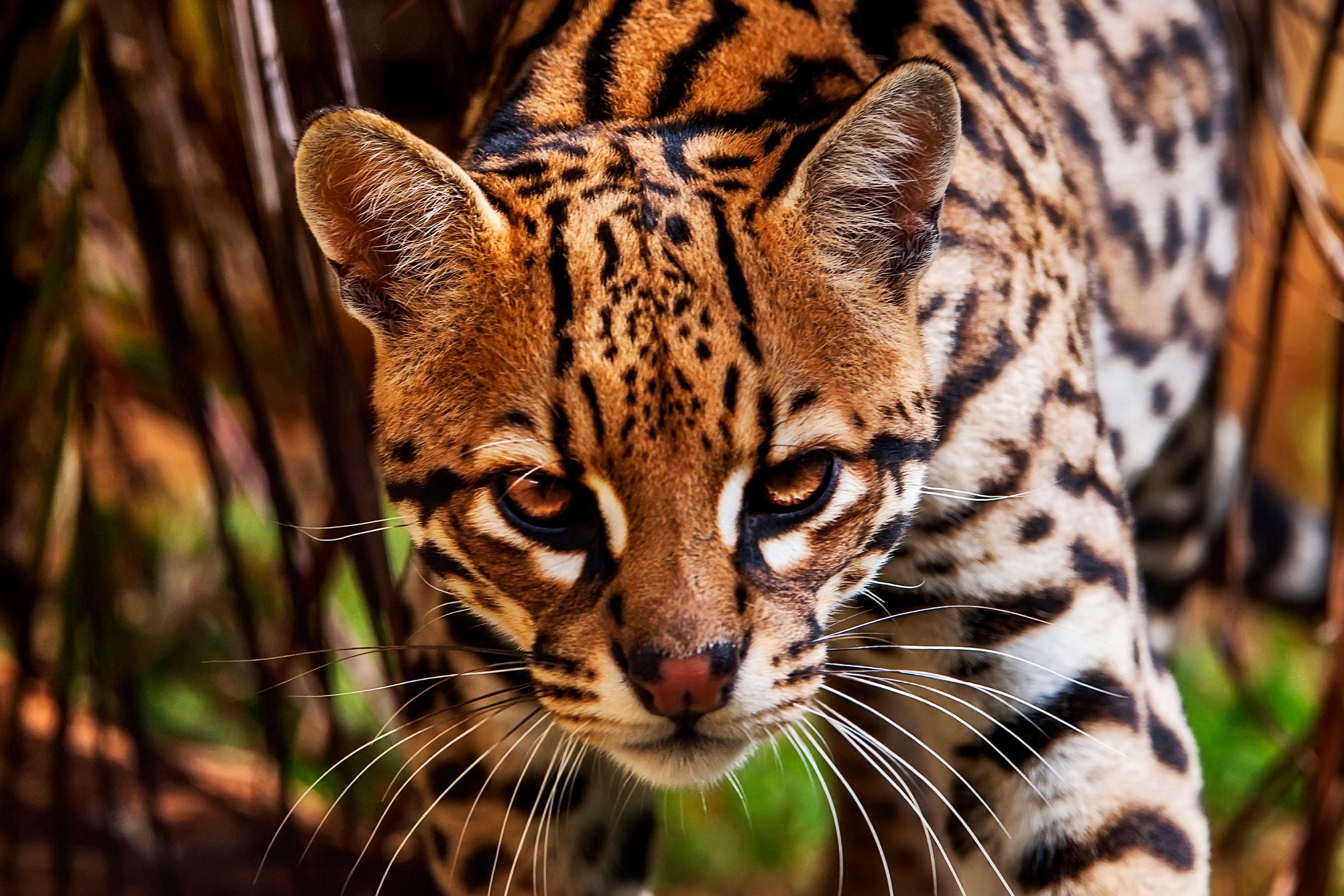Ocelot
(Leopardus pardalis)

Description
The ocelot (Leopardus pardalis) is a medium-sized spotted wild cat that reaches 40–50 cm (15.7–19.7 in) at the shoulders and weighs between 8 and 15.5 kg (17.6 and 34.2 lb). It was first described by Carl Linnaeus in 1758. Two subspecies are recognized. It is native to the southwestern United States, Mexico, Central and South America, and to the Caribbean islands of Trinidad and Margarita. It prefers areas close to water sources with dense vegetation cover and high prey availability. Typically active during twilight and at night, the ocelot tends to be solitary and territorial. It is efficient at climbing, leaping and swimming. It preys on small terrestrial mammals, such as armadillos, opossums, and lagomorphs. Both sexes become sexually mature at around two years of age and can breed throughout the year; peak mating season varies geographically. After a gestation period of two to three months the female gives birth to a litter of one to three kittens. They stay with their mother for up to two years, after which they leave to establish their own home ranges. The ocelot is listed as Least Concern on the IUCN Red List, and is threatened by habitat destruction, hunting, and traffic accidents. Populations are decreasing in many parts of its range. The association of the ocelot with humans dates back to the Aztec and Incan civilizations; it has occasionally been kept as a pet. The ocelot ranges from the southwestern United States to northern Argentina, up to an elevation of 3,000 m (9,800 ft). In the United States, it is found in Texas and Arizona, and is extirpated from Louisiana and Arkansas. Fossils of ocelots were found in Florida, specifically in the Reddick Fossil Site. It inhabits tropical forests, thorn forests, mangrove swamps and savannas. A 2019 study in the Brazilian Amazon showed that it prefers habitats with good availability of prey and water, and tends to avoid other predators. It favors areas with dense forest cover and water sources, far from roads and human settlement, avoiding steep slopes and highly elevated areas due to lack of prey. In areas where ocelots coexist with larger predators such as the cougar and human beings, they may tune their active hours to avoid them, and seek dense cover to avoid competitors. It can adapt well to its surroundings; as such, factors other than the aforementioned are not significant in its choice of habitat.
Taxonomic tree:







